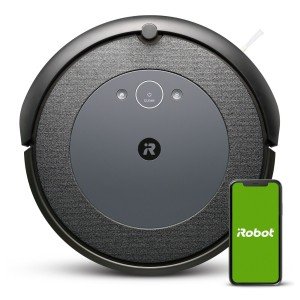The Rise of Robotic Vacuums: A Comprehensive Overview
In today's busy world, innovation is consistently evolving to make our lives easier, and the household cleaning sector has experienced one of the most noteworthy improvements: the robotic vacuum. This intelligent device not only saves energy and time but likewise ensures a cleaner home environment with very little manual effort. This short article digs into the remarkable advancement of robotic vacuums, how they work, their benefits and downsides, market trends, and future directions.
The Evolution of Robotic Vacuums
Robotic vacuums have actually made terrific strides because their beginning in the late 1990s. The very first commercially readily available robotic vacuum was presented in 1996, followed by various models, each developed with intensifying sophistication and functions. Here is a short timeline of robotic vacuum development:
| Year | Occasion |
|---|---|
| 1996 | Introduce of the first robotic vacuum (Electrolux's Trilobite) |
| 2002 | iRobot Roomba is launched, making robotics mainstream |
| 2010 | Introduction of sophisticated mapping and navigation features |
| 2017 | Integration of AI and smart home compatibility |
| 2022 | Launch of highly advanced models including self-emptying dustbins |
How Robotic Vacuums Work
Robotic vacuums utilize a combination of sensing units, algorithms, and artificial intelligence to browse areas successfully. Here's how they operate:
- Navigation: Most robotic vacuums utilize a series of sensing units to find challenges and browse around furniture. Some high-end models incorporate LIDAR (Light Detection and Ranging) technology to develop comprehensive maps of the environment.
- Cleaning Mechanisms: They are geared up with turning brushes and suction mechanisms to gather particles from numerous surface areas. Depending on the model, they can transition in between carpets and difficult floorings flawlessly.
- Smart Features: Many modern robotic vacuums are Wi-Fi enabled, permitting users to manage them remotely by means of a mobile phone app. Functions commonly consist of scheduling, drawing up cleaning courses, and integration with other smart home devices.
- Self-Maintenance: High-end systems may come with self-emptying capabilities, where the robot can dock itself to a base that collects dust and particles without human intervention.
Advantages of Robotic Vacuums
Robotic vacuums have gathered enormous popularity, and for good reasons. Here are a few of the most considerable advantages:
- Time-Saving: Automating the cleaning procedure enables users to take part in other meaningful activities.
- Efficient Cleaning: Regular cleaning can be quickly attained by arranging the robot to clean day-to-day or weekly, keeping dirt and allergens at workable levels.
- Compact Design: Their small size permits them to fit under furniture and in hard-to-reach places.
Regardless of their benefits, robotic vacuums also come with restrictions:
- Limited suction power: While they work for keeping tidy floorings, they might not match the deep cleaning of conventional vacuums.
- Battery life: Most designs need to return to their dock after a specific period of usage.
- Initial expenses: High-quality robotic vacuums can be expensive, though rates have been reducing with advancements in technology.
Current Market Trends
The marketplace for robotic vacuums is broadening quickly. According to a current market research study report, the global robotic vacuum market is expected to reach ₤ 7.2 billion by 2027, growing at a CAGR of 23.5%, driven by a number of aspects:
Increased Adoption of Smart Home Devices
The increase of smart home technology has motivated customers to integrate robotic vacuums into their families. Numerous robotic vacuums work perfectly with home assistants like Amazon Alexa and Google Assistant, simplifying their operation.
Advances in Robotics and AI
As the technology behind robotic vacuums progresses, models are being geared up with better navigation systems, AI algorithms for finding out personal cleaning practices, and enhanced features for specific floor types.
Focus on Health and Hygiene
The increased awareness of tidiness and health, particularly due to current global events, has actually driven consumers to buy gadgets that frequently eliminate dust, allergens, and animal hair from their homes.
Future Directions
As innovation advances, robotic vacuums are expected to evolve even more, including functions that increase their effectiveness in households. Anticipated advancements include:
- Improved AI Learning: With improvements in device knowing, future designs will be better at understanding their environment and adjusting to the requirements of their owners.
- Multi-Purpose Design: Potential future designs may include features for mopping, disinfecting, and air filtration in addition to vacuuming.
- Sustainability: As eco-consciousness increases, manufacturers are likely to concentrate on energy effectiveness, recyclable materials, and sustainable production practices.
Frequently Asked Questions About Robotic Vacuums
1. Can robotic vacuums vacuum on carpet?Yes, most robotic vacuums can shift between various floor types, including carpets and hard floors. 2. How frequently ought to I run my robotic vacuum?It depends
on your family's cleaning requirements, however numerous users
schedule their robotic vacuums to run everyday or every couple of days. 3. Are robotic vacuums worth the investment?For lots of consumers, the time conserved and convenience used by robotic vacuums makes them rewarding,
particularly for hectic families. 4. Can I manage my robotic vacuum remotely?Most modern-day robotic vacuums can be controlled via a smartphone app, allowing for scheduling and monitoring from anywhere. 5. Do Learn More Here need a traditional vacuum cleaner?While robotic vacuums efficiently manage daily cleaning, a conventional vacuum may still be needed for deep cleans or toughermesses. The development of robotic vacuums shows a significant leap in automating household chores, combining innovative technology with easy to use operation. As the pattern toward smart homes continues and consumer expectations progress, robotic vacuums will likely keep improving, supplying ever-greater convenience and effectiveness in maintaining clean home. As house owners consider the potential benefits and limitations of these gadgets, it is clear that robotic vacuums have actually solidified their track record as important tools in modern home management.

